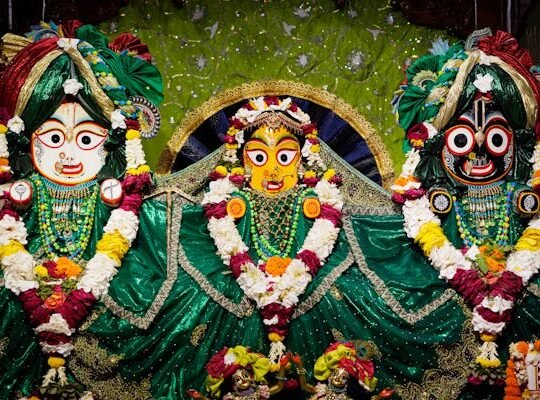Pic Credit: Tripzilla,india
By Sujata Muguda, Shreyas WebMedia Solutions
North India, a region steeped in spirituality and ancient traditions, offers a unique tapestry of sacred sites that attract millions of pilgrims and spiritual seekers worldwide. These places are not just destinations; they are experiences that provide a glimpse into the soul of India’s rich cultural and religious heritage. In this article, we embark on a journey through some of the most revered spiritual landscapes of North India, exploring the history, significance, and spiritual allure that these sites hold.
Varanasi: The Eternal City
Varanasi, also known as Kashi or Benaras, is often referred to as the spiritual capital of India. Situated on the banks of the Ganges River, it is one of the oldest living cities in the world. The city’s spiritual significance is evident in its ghats, where life and death coexist, and in the evening Ganga Aarti, an ethereal ceremony that fills the air with devotion. The Kashi Vishwanath Temple, dedicated to Lord Shiva, is a must-visit for any spiritual sojourner.
Haridwar: The Gateway to the Gods
Haridwar, located in Uttarakhand, is another pivotal pilgrimage site where the Ganges River emerges from the Himalayas. The city is famous for the Har Ki Pauri ghat and the mesmerizing Ganga Aarti. It is also one of the four locations of the Kumbh Mela, the largest religious gathering in the world.
Amarnath: The Abode of Shiva
The Amarnath cave in Jammu & Kashmir is a sacred shrine for Hindus. Inside the cave, a natural ice Shivalinga forms, symbolizing the presence of Lord Shiva. The journey to Amarnath is both a physical and spiritual challenge, with thousands undertaking the pilgrimage during the annual Amarnath Yatra.
Bodh Gaya: The Land of Enlightenment
Bodh Gaya in Bihar is where Prince Siddhartha attained enlightenment under the Bodhi Tree and became the Buddha. The Mahabodhi Temple complex, a UNESCO World Heritage Site, is a place of profound peace and spirituality. Pilgrims from all over the world come here to meditate and seek inner peace.
The Golden Temple: A Symbol of Universal Brotherhood
The Harmandir Sahib, commonly known as the Golden Temple, in Amritsar, Punjab, is the holiest shrine of Sikhism. It stands as a symbol of equality and brotherhood. The temple’s architecture and the serene Amrit Sarovar lake that surrounds it create a tranquil atmosphere for contemplation.
Rishikesh and the Yoga Connection
Rishikesh, nestled in the foothills of the Himalayas, is known as the ‘Yoga Capital of the World’. It is a magnet for those seeking spiritual growth through yoga and meditation. The town is dotted with ashrams, and the sound of temple bells and chants adds to the spiritual ambiance.
Conclusion
The spiritual landscape of North India is a mosaic of diverse religious practices, ancient temples, and serene environments. Each site offers a unique window into the spiritual heart of India, inviting travelers to not only witness but also participate in timeless rituals and practices. Whether it’s the aarti ceremonies on the Ganges or the silent meditation under the Bodhi Tree, these sacred sites provide a path to self-discovery and spiritual awakening.
As we conclude this journey, we are reminded that the true essence of visiting these sacred spaces lies in the personal transformations they inspire. The pilgrimage through North India’s spiritual landscape is an odyssey that transcends religion, offering a universal message of peace, unity, and eternal wisdom.
For those interested in exploring these sacred sites, the best time to visit is generally between October and March, when the weather is conducive for travel. Each destination holds its own set of festivals and special events, promising a rich and immersive experience for every traveler.






